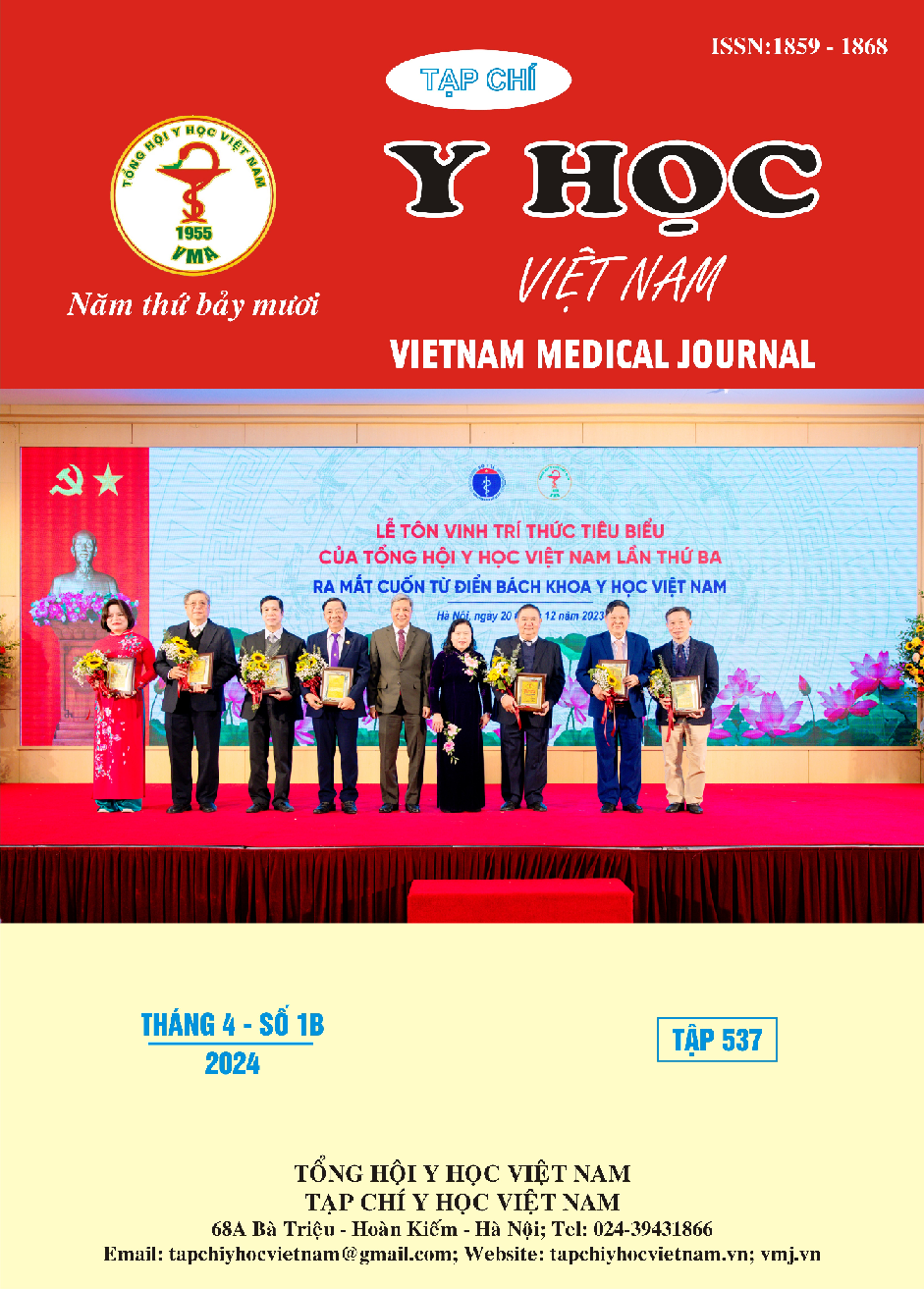ĐẶC ĐIỂM VÀ MỘT SỐ YẾU TỐ LIÊN QUAN ĐẾN MỨC ĐỘ NẶNG CỦA NGƯNG THỞ TẮC NGHẼN KHI NGỦ Ở BỆNH NHÂN ĐÁI THÁO ĐƯỜNG TÍP 2
Nội dung chính của bài viết
Tóm tắt
Mục tiêu nghiên cứu: Nghiên cứu nhằm xác định đặc điểm và một số yếu tố liên quan đến mức độ nặng của ngưng thở tắc nghẽn khi ngủ (OSA) ở bệnh nhân đái tháo đường típ 2. Đối tượng và phương pháp nghiên cứu: Nghiên cứu mô tả cắt ngang được tiến hành trên 42 bệnh nhân đái tháo đường típ 2 được chẩn đoán OSA tại Bệnh viện Trường Đại học Y dược Cần Thơ từ tháng 03 năm 2023 đến tháng 3 năm 2024. Kết quả: Về đặc điểm chung, nhóm OSA trung bình-nặng chiếm ưu thế đáng kể so với nhóm OSA nhẹ về tỷ lệ nam giới (50% vs. 10,7%, p = 0,008) và tiền sử hút thuốc lá (71,4% vs. 32,1%, p = 0,016). Về đặc điểm lâm sàng, nhóm OSA nhẹ ưu thế hơn về triệu chứng thức dậy mệt mỏi (96,4% vs. 64,3%, p = 0,011). Bên cạnh đó, các triệu chứng ngưng thở/nghẹt thở, thở hổn hển, thức giấc về đêm, ngáy to và giảm tập trung ưu thế ở nhóm OSA nhẹ, trong khi tình trạng đau đầu buổi sáng, buồn ngủ ban ngày, mất ngủ, tiểu đêm lại hay gặp ở nhóm OSA trung bình-nặng nhưng sự khác biệt không có ý nghĩa thống kê. Về đặc điểm đa ký hô hấp, kết quả ghi nhận nhóm OSA trung bình-nặng có chỉ số AHI, chỉ số ngưng thở tắc nghẽn và chỉ số ODI cao hơn so với nhóm OSA nhẹ lần lượt là 33,35 ± 11,19 và 9,44 ± 3,13; 17,51 ± 11,4 và 1,08 ± 1,27; và 35,74 ± 16,45 và 14,16 ± 6,92 (tất cả p < 0,001). Tuy nhiên, phân tích đa biến cho thấy chỉ có triệu chứng thức dậy mệt mỏi có liên quan đến khả năng mắc OSA trung bình-nặng cao hơn (OR = 13,28; KTC 95%: 1,02-173,56; p = 0,049). Kết luận: Ở bệnh nhân đái tháo đường típ 2, không có sự tương quan rõ giữa triệu chứng lâm sàng và mức độ nặng của OSA. Tuy nhiên, một số đặc điểm ưu thế ở OSA trung bình-nặng cần lưu ý như giới tính nam, tiền sử hút thuốc lá, đặc biệt là triệu chứng thức dậy mệt mỏi nhằm tầm soát và đánh giá thêm với các thông số trên đa ký hô hấp.
Chi tiết bài viết
Từ khóa
Ngưng thở tắc nghẽn khi ngủ, đái tháo đường típ 2, mức độ nặng, yếu tố liên quan.
Tài liệu tham khảo
2. Durán J., Esnaola S., Rubio R., Iztueta A. Obstructive sleep apnea-hypopnea and related clinical features in a population-based sample of subjects aged 30 to 70 yr. Am J Respir Crit Care Med. 2001; 163(3 Pt 1):685-9.
3. Heffner J.E., Rozenfeld Y., Kai M., Stephens E.A., Brown L.K. Prevalence of diagnosed sleep apnea among patients with type 2 diabetes in primary care. Chest. 2012; 141(6):1414-1421.
4. Lopes C., Esteves A.M., Bittencourt L.R., Tufik S., Mello M.T. Relationship between the quality of life and the severity of obstructive sleep apnea syndrome. Braz J Med Biol Res. 2008; 41(10):908-913.
5. Lal C., Weaver T.E., Bae C.J., Strohl K.P. Excessive Daytime Sleepiness in Obstructive Sleep Apnea. Mechanisms and Clinical Management. Ann Am Thorac Soc. 2021; 18(5):757-768.
6. Rundo JV. Obstructive sleep apnea basics. Cleve Clin J Med. 2019; 86(9 Suppl 1):2-9.
7. Reichmuth K.J., Austin D., Skatrud J.B., Young T. Association of sleep apnea and type II diabetes: a population-based study. Am J Respir Crit Care Med. 2005; 172(12):1590-1595.
8. Jang Y.S., Nerobkova N., Hurh K., Park E.C., Shin J. Association between smoking and obstructive sleep apnea based on the STOP-Bang index. Sci Rep. 2023; 13(1):9085.
9. Lloberes P., Durán-Cantolla J., Martínez-García M.Á., et al. Diagnosis and treatment of sleep apnea-hypopnea syndrome. Spanish Society of Pulmonology and Thoracic Surgery. Arch Bronconeumol. 2011; 47(3):143-156.


